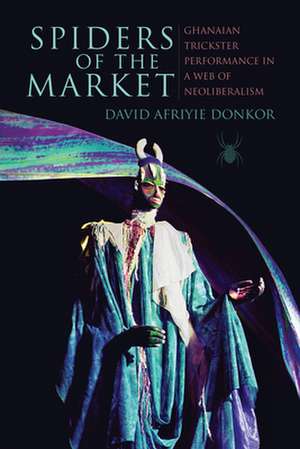Spiders of the Market: African Expressive Cultures
Autor David Afriyie Donkoren Limba Engleză Hardback – 3 iul 2016
The Ghanaian trickster-spider, Ananse, is a deceptive figure full of comic delight who blurs the lines of class, politics, and morality. David Afriyie Donkor identifies social performance as a way to understand trickster behavior within the shifting process of political legitimization in Ghana, revealing stories that exploit the social ideologies of economic neoliberalism and political democratization. At the level of policy, neither ideology was completely successful, but Donkor shows how the Ghanaian government was crafty in selling the ideas to the people, adapting trickster-rooted performance techniques to reinterpret citizenship and the common good. Trickster performers rebelled against this takeover of their art and sought new ways to out trick the tricksters.
Preț: 473.41 lei
Preț vechi: 614.82 lei
-23% Nou
90.59€ • 96.87$ • 75.53£
Tipărit la comandă
Livrare economică 17 aprilie-01 mai
Specificații
ISBN-10: 0253021340
Pagini: 248
Dimensiuni: 157 x 234 x 23 mm
Greutate: 0.45 kg
Editura: Indiana University Press
Seria African Expressive Cultures
Notă biografică
David Afriyie Donkor is Assistant Professor of Performance Studies and Africana Studies at Texas A&M University. He is an actor and a director who has adapted several folktales, personal narratives, and literary works for the stage. His scholarly work is published in Ghana Studies, Cultural Studies, Theatre Survey, and TDR.
Cuprins
Introduction
1. From State to Market: The History of a Social Compact
2. Once Upon a Spider: Ananse and the Counterhegemonic Trickster Ethos
3. Selling the President: Stand-Up Comedy and the Politricks of Endorsement
4. Ma Red's Maneuvers: Popular Theater and "Progressive" Culture
5. In the House of Stories: Village Aspirations and Heritage Tourism
Conclusion
Notes
Bibliography
Index




